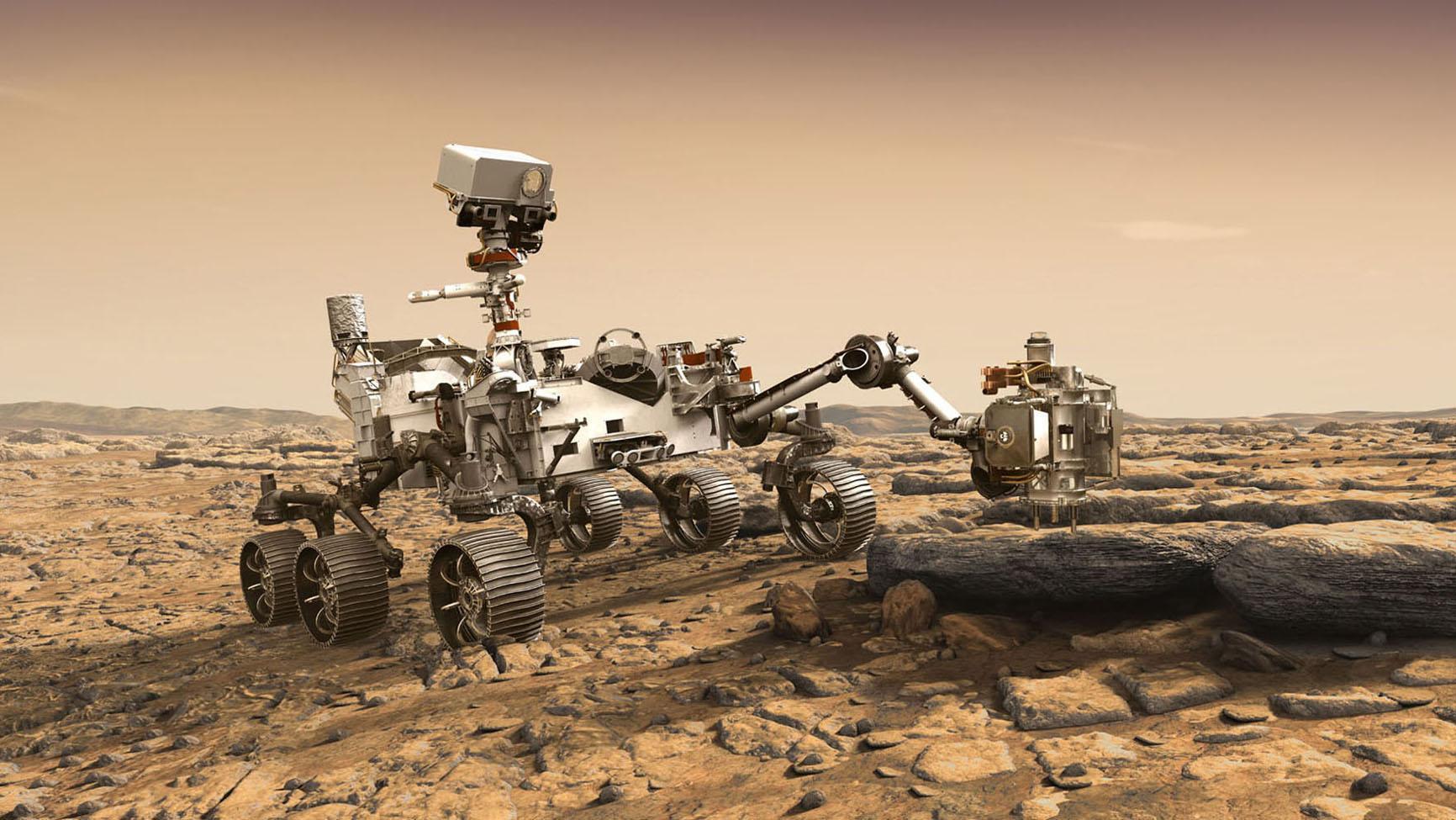Nasa to launch rover to Mars in attempt to find alien life
'This mission has the potential to address whether we're alone in the universe'

Nasa has revealed the rover that it hopes will find aliens on Mars once and for all.
The new, much improved unmanned vehicle will head to the planet as part of the Mars 2020 mission. As it does, it will look for signs of ancient microbial life on the planet, which has until now been presumed to be uninhabitable.
It will be the successor to the 2012 Curiosity rover, which is still trundling along the surface of the red planet. It looks very similar, and borrows many of the same technologies – but it will also include a full seven new instruments and re-designed wheels, according to its creators at NASA's Jet Propulsion Laboratory.
Many of those sensors will allow it to study the terrain of the planet, delving beneath and above the surface. It will pick up different soil and rock samples, looking through them for signs of life.
"What we learn from the samples collected during this mission has the potential to address whether we're alone in the universe," said Ken Farley, a JPL scientist with the Mars 2020 project.
Some 85 per cent of the rover is using the same components as its predecessor. "The fact that so much of the hardware has already been designed -- or even already exists -- is a major advantage for this mission," said Jim Watzin, director of NASA's Mars Exploration Program. "It saves us money, time and most of all, reduces risk."
But the differences are important, and build on work that Nasa has done since. Much of that includes data that has been sent back by Curiosity – and offered enticing clues that scientists now hope to be able to investigate further using better technology.
That includes technology that will allow it to spot signs of life at the scale of microbes. They include an X-ray spectrometer that can see spots as small as a grain of salt, and an ultraviolet laser that can see the usually invisible glow that comes out of excited rings of carbon atoms.
"Our next instruments will build on the success of MSL, which was a proving ground for new technology," said George Tahu, NASA's Mars 2020 program executive. "These will gather science data in ways that weren't possible before."
The rover will be carried to Mars using a new cruise stage, that will carry it into space, and a special "sky crane" that will lower it down. JPL is developing a new landing technology that will allow the rover to visit sites deemed too risky for Curiosity and shave miles off its journey.
NASA has successfully landed spacecraft on Mars seven times and is using the International Space Station to prepare for human missions to the moon and Mars.
Join our commenting forum
Join thought-provoking conversations, follow other Independent readers and see their replies
Comments